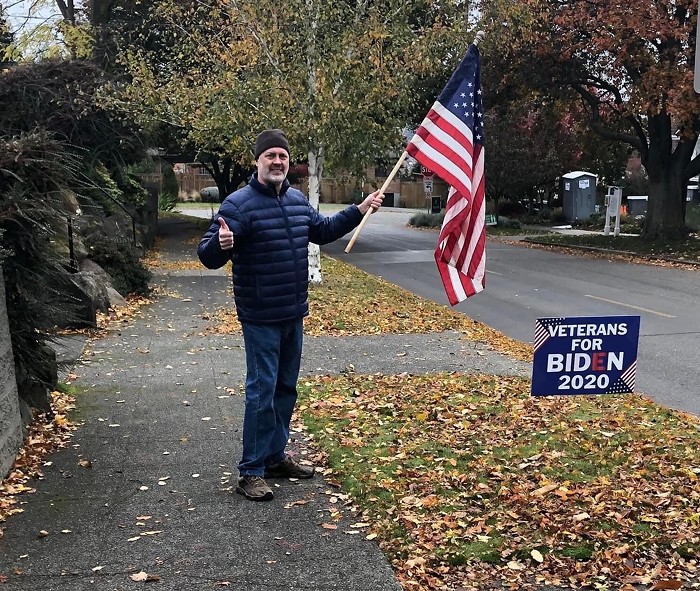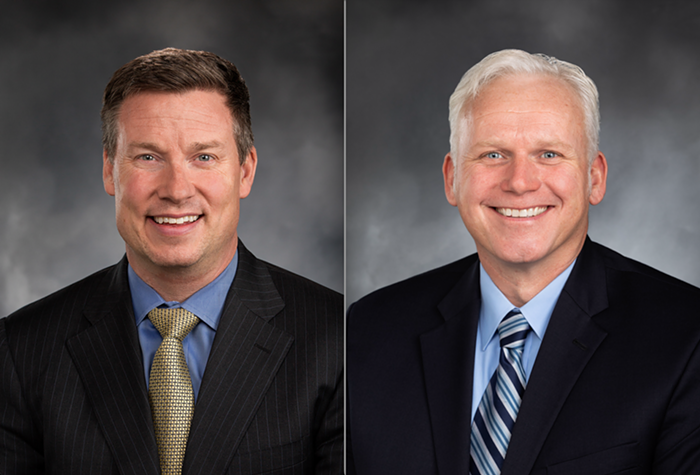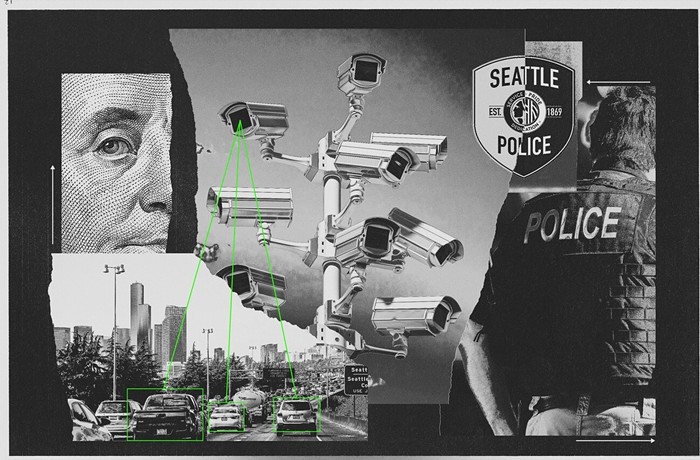The public was supposed to see these findings last February, but a little problem arose. Before the study was finalized, Sound Transit fired the company that was working on it, Bucher, Willis & Ratliff. In addition, the Sound Transit employee who headed up the project now works for the firm that replaced BWR, Parsons Brinckerhoff. Last week, Parsons released their own study about light rail and the floating bridges. Can you guess the new findings? You got it: Light rail is the best thing since sliced bread.
In early February, Kansas City-based engineering firm BWR was putting the finishing touches on three months' worth of contractual work for Sound Transit. The mission seemed easy enough--come up with a list of alternative technologies, compile it in a report called the "Alternative Transit Technology Report" (ATT), and pick the most suitable options for the Puget Sound region.
The other part of BWR's mission was to pick which of those technologies best suited travel across the lake. BWR's findings on that issue are housed in a scrapped draft report called the Trans-Lake study.
According to sources close to the damaging study who wish to remain anonymous, BWR was fired because they were concerned that light rail was too dangerous to make it across 520, I-90, or any other floating bridge built to replace the aging 520. A member of Sound Transit's own Expert Review Panel, a group of transportation experts set up by Sound Transit to weigh in on alternative transit options, confirmed that BWR warned about the dangers of light rail. "Due to the rising and falling of the lake, and the swaying of the bridge," confirms Paul Larrousse, Director of the National Transit Institute and Sound Transit panel member, "there was concern about keeping a light rail train on the track." To top it off, BWR recommended monorail or aerorail as a better and more cost-effective solution than light rail. After Sound Transit saw BWR's conclusions, Sound Transit fired BWR, and the project manager Nick Roach went to work for the engineering company that Sound Transit hired to replace BWR, Parsons Brinckerhoff.
Sound Transit says BWR was fired because contract negotiations could not be resolved. BWR executive vice president Steve Lewis would not comment. "There was no ulterior motive," says Sound Transit project manager Barbara Gilliland. "We just couldn't solve our contracting issues." Meanwhile, to address conflict-of-interest concerns, Parsons forbids Roach from working on any Sound Transit project for one year.
Parsons, a multi-million-dollar national engineering and consulting firm, has been involved with Sound Transit from the get-go. Parsons was the lead contractor that helped draft the 21-mile line plan voters approved in 1996. In addition to the Trans-Lake study and the ATT report (which has not yet been released), Parsons is currently working on numerous projects for Sound Transit. For these reasons, some say Parsons is not exactly objective, and the results of their new Trans-Lake study, now called "High-Capacity Transit Technology Options," only adds to the conflict-of-interest criticism.
According to Chris Johnson, aide to King County Council Member and dissident Sound Transit board member Rob McKenna, there is no doubt Parsons has the light-rail blinders on. "I have never seen anything so mercenary," complains Johnson, who contends Parsons panned everything but light rail in a Trans-Lake briefing in June.
"We do not pursue projects that have a conflict of interest, real or perceived," says Parsons Area Manager Jared Smith, who recently left his position as Mayor Paul Schell's Sound Transit point man. "There aren't many firms that have offices locally with the experience in alternative technologies."
Sources say Parsons' pro-light-rail recommendations completely contradict BWR's findings. Though Parsons does weigh in on other technologies, like monorail and high-tech buses, the firm dismisses most of them for not meeting ridership estimates. Those estimates, as well as Parsons' conclusions that monorail and other alternative transit options could not meet those needs, are being questioned. "Whether it's downsizing the number of people who can fit on a bus to make bus transit look less desirable, or tweaking travel speeds," says an angry Jim MacIsaac, long-time freelance engineer, "Sound Transit finds people who will skew the numbers to their advantage." Meanwhile, MacIsaac agrees with BWR's results. "There is just too much motion on those bridges," he says, "and too many derailment possibilities."
Sound Transit told The Stranger that crossing the floating bridges is perfectly safe, and cites a September 13 Washington State Department of Transportation report, the "Homer Hadley Feasibility Study," that confirms light rail could make it across one of the floating bridges, I-90. "Because of light rail's weight and the twisting motion of the bridge," says Les Rubstella, project manager for the WSDOT study, "there was some doubt whether we could do it. However, we believe it's definitely doable."
In addition to taking over the Trans-Lake study from BWR, Parsons is also responsible for delivering a final ATT report. (Remember, the ATT report is a list of alternative technologies suitable for the entire Puget Sound region, not just for the bridges.) Unfortunately, that ATT study isn't out yet. Sound Transit says the delays arise from switching consulting firms mid-stream, and that they are doing their best to get the study completed. Fair enough. However, some critics argue that Sound Transit is stalling the ATT study because it could weaken the emphasis on light rail technology for the entire region.


















